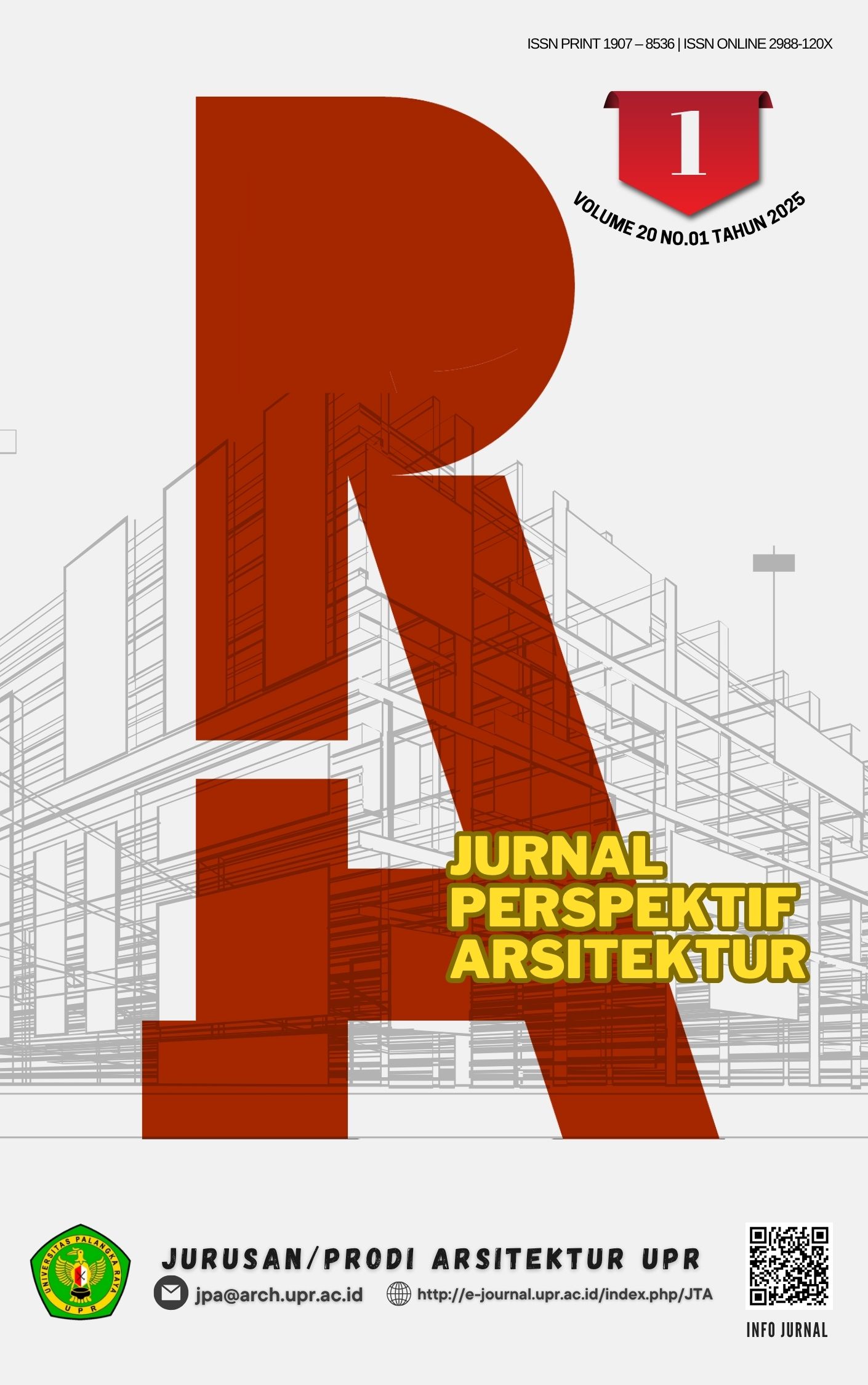PALANGKA RAYA YOUTH CREATIVE CENTER DENGAN PENEKANAN ARCHITECTURE OF HAPPINESS
PALANGKA RAYA YOUTH CREATIVE CENTER DENGAN PENEKANAN ARCHITECTURE OF HAPPINESS
DOI:
https://doi.org/10.36873/jpa.v20i1.15007Keywords:
Palangka Raya, young generation, creative industry, Youth Creative Center, architecture of happiness, zoning, circulation., Palangka Raya, Young Generation, Creative Industry, Youth Creative Center, Architecture of happiness, Zoning, CirculationAbstract
Palangka Raya, the fifth-largest city in Kalimantan and the administrative center of Central Kalimantan, has experienced significant economic growth, with an increase of 2.09% in the first quarter of 2024. The younger generation plays a crucial role in driving the local economy and are the future leaders. They are actively involved in creative industry communities, as showcased by the annual Kampoeng Komunitas event. However, facilities to support their creativity are still inadequate. There is a need for spaces dedicated to education, creation, production, and showcasing their work. Currently, many creative activities are conducted in private homes or rented spaces that are not specifically designed for such purposes.To address this deficiency, an incubation concept is needed to support various aspects of the creative industry through entrepreneurship programs and skill training. The Youth Creative Center is designed to provide educational, recreational, and commercial facilities. Proper zoning and circulation are essential in the design of this center. The "architecture of happiness" approach is proposed to ensure the well-being of the occupants by incorporating good zoning principles and effective circulation, as well as meeting emotional needs such as privacy and healthy social interaction.The design method used is the Glass Box method, which utilizes explicit information from both primary and secondary data to produce a design supported by clear analysis and concepts. The goal of this design is to create the Palangka Raya Youth Creative Center with an emphasis on the architecture of happiness
Downloads
References
Badan Pusat Statistik, “Perekonomian Kalimantan Tengah berdasarkan PDRB Triwulan I-2024,” kalteng.bps.go.id. Accessed: Mar. 02, 2024. [Online]. Available: https://kalteng.bps.go.id/pressrelease/2024/05/06/1510/perekonomian-kalimantan-tengah-berdasarkan-pdrb-triwulan-i-2024-secara-y-on-y-tumbuh-5-01-persen-dan-terkontraksi-6-23-persen-secara-q-to-q-.html
S. Suprayitno, J. N. Silalahi, and P. F. P. Pratiwi, “Pemberdayaan Komunitas Pemuda: Menuju Palangka Raya Sebagai Ibukota Pemerintahan Republik Indonesia,” Adm. J. Ilm. Adm. Publik dan Pembang., vol. 10, no. 2, pp. 103–110, 2019, doi: 10.23960/administratio.v10i2.96.
M. M. Dr. LESTARI MOERDIJAT S.S., “Kesehatan Mental Generasi Muda Penting dalam Proses Pembangunan Bangsa,” mpr.go.id. Accessed: Apr. 02, 2024. [Online]. Available: https://mpr.go.id/berita/Kesehatan-Mental-Generasi-Muda-Penting-dalam-Proses-Pembangunan-Bangsa
M. E. Pangestu, “Pengembangan ekonomi kreatif indonesia 2025,” Jakarta Dep. Perdagang. RI, 2008.
H. Rebecca, “‘designing Happiness: Architecture and Urban Design for Joy and Well-being’, Faculty of the Graduate School of the university of Maryland, College Park,” no. February, p. 24, 2016, doi: 10.13016/M2BF88.

Downloads
Published
How to Cite
Issue
Section
License
Copyright (c) 2025 Abed Nego Sirait Abed Nego Sirait, Syahrozi, Joni Wahyubuana Usop

This work is licensed under a Creative Commons Attribution 4.0 International License.







